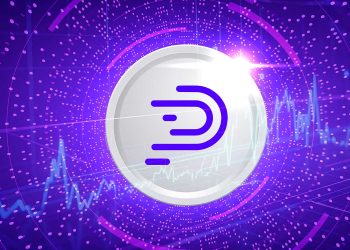Polygon to Avalanche are both prominent blockchain networks that have gained significant traction in the decentralized finance (DeFi) space. Polygon, formerly known as Matic Network, is a Layer 2 scaling solution for the Ethereum blockchain that aims to address the network’s high gas fees and slow transaction times. By utilizing sidechains and other scaling technologies, Polygon enables faster and cheaper transactions, as well as interoperability with other blockchains.
On the other hand, Avalanche is a Layer 1 blockchain network that has gained attention for its high throughput and low transaction fees. Built with the goal of creating a platform that can support decentralized applications (dApps) with high performance and low latency, Avalanche utilizes a consensus mechanism known as Avalanche-X to enable faster and more efficient block confirmation.
Additionally, Avalanche supports the creation of custom subnets, or sub-networks, that can operate with their own set of rules and validators, further enhancing the network’s flexibility and scalability. Despite their different approaches to scaling and consensus, both Polygon and Avalanche have established themselves as promising platforms for building the next generation of DeFi applications.
Why Bridge Between Polygon and Avalanche?
Bridging between Polygon and Avalanche can offer several benefits for users in the DeFi space. One reason someone might want to bridge between these networks is to access liquidity on different decentralized exchanges (DEXs). By bridging their assets between Polygon and Avalanche, users can access a wider variety of DEXs and take advantage of different trading pairs that may not be available on their original network. This can help users find better prices for their trades and maximize their profits.
Another reason to bridge between Polygon and Avalanche is to take advantage of lower fees or faster transaction times. While both networks are known for their high performance and low transaction costs, users may still find that one network offers better conditions for their specific use case. By bridging their assets to the other network, they can take advantage of these conditions without having to move their assets back and forth between different wallets or exchanges.
Bridging can allow users to participate in cross-chain applications that require assets to be transferred between different networks. By bridging their assets between Polygon and Avalanche, users can seamlessly participate in these applications without having to worry about the underlying technical details of how the assets are being transferred.
How to Bridge from Polygon to Avalanche Safely and Efficiently
Bridging from Polygon to Avalanche can be a straightforward process for users who are familiar with the underlying technologies and have the necessary tools. The first step is to ensure that the user has a wallet that supports both Polygon and Avalanche, as they will need to be able to send and receive tokens on both networks. Popular wallets that support both networks include Metamask and Trust Wallet.

Next, the user will need to find and use a bridge service that supports the transfer of tokens between Polygon and Avalanche. One such service is the Avalanche Bridge, which allows users to transfer assets between Avalanche and other blockchains, including Polygon. The process involves depositing the desired tokens into the bridge, which will then mint an equivalent amount of wrapped tokens that can be used on the other network. Once the wrapped tokens have been received on the other network, the user can then unwrap them to receive the original tokens.
It’s important to note that the process of bridging between Polygon and Avalanche can involve risks, such as the potential for lost or stolen funds. Users should carefully review the instructions and security measures provided by the bridge service, as well as consider the associated fees and transaction times. By following a reliable guide and taking appropriate precautions, users can safely and efficiently bridge between these two networks to take advantage of their respective benefits.
Overcoming Common Challenges When Bridging from Polygon to Avalanche
While bridging between Polygon and Avalanche can be a convenient way to access liquidity and other benefits on different networks, there are some common challenges that users may encounter along the way. One potential issue is network congestion, which can lead to longer transaction times or even failed transactions. To mitigate this, users can try adjusting the gas fees associated with their transactions to incentivize miners to prioritize them. Additionally, users may want to consider bridging during times of lower network activity, such as during off-peak hours, to avoid congestion.
Another challenge that users may face is the need to switch between different wallets or interfaces when interacting with each network. For example, a user may need to use a different wallet to hold their wrapped tokens on the other network or access a different interface to use a specific bridge service. To address this, users can consider using multi-chain wallets or interfaces that support both Polygon and Avalanche, such as MetaMask or Frontier Wallet. By consolidating their interactions into a single platform, users can reduce the need to switch between different tools and interfaces, making the process of bridging between networks more streamlined and efficient.
The Future of Cross-Chain Bridges
As the blockchain ecosystem continues to grow and evolve, cross-chain bridges are likely to play an increasingly important role in enabling greater interoperability and collaboration between different networks. In addition to bridging between Polygon and Avalanche, users may be interested in bridging between other prominent networks like Ethereum and Binance Smart Chain or Solana and Cosmos. To facilitate these connections, new tools and innovations are being developed, such as decentralized bridges that don’t rely on centralized custodians or trustless bridges that use innovative consensus mechanisms to ensure the safety and security of cross-chain transfers.
Looking forward, cross-chain bridges have the potential to unlock new possibilities for decentralized finance and other blockchain-based applications, allowing users to seamlessly access liquidity, data, and other resources across different networks. As the technology and infrastructure supporting cross-chain bridges continue to mature, we can expect to see even more innovative use cases and applications emerge, further expanding the capabilities and impact of the blockchain ecosystem as a whole.













